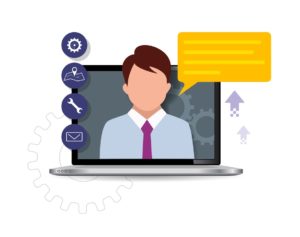Every business on the globe is adapting to the need for post-COVID protocols and business practices. A big part of that is emphasizing remote and online working instead of in-office and face-to-face work. If you have been relying on meetings and phone line calls, or if your business does not yet have an integral phone system, it’s time to rethink your infrastructure.
VOIP offers fully remote phone services tailored to the needs of a modern business. From customer service pools to official office phone numbers, a VOIP system can do anything a traditional business PBX system can do and more. But what do virtual phones have to offer in the post-COVID era? Being able to communicate remotely and set up your offices anywhere in the world with the same numbers will come in handy in the days of remote business. Let’s take a look at some of the key ways that VOIP phones can secure your business in a post-COVID economy.
Turn Office Phones into Home Office Phones
VOIP phone numbers are assigned and accssed based on employee login accounts, not physical phone lines. This means that your employees can take their office phones home with them for remote work.
Clients, customers, and business partners will still be able to find each in-office contact as if they were still in the office, at the same phone numbers and often during the same hours, even though your team has gone home to work remotely in COVID-safety. In fact, companies already equipped with VOIP experienced some of the least shake-up when transitioning to work-at-home policies.
Remain Available During Phone-Line-Cutting Disasters
One of the overlooked consequences of COVID is lack of preparedness for local disasters. Floods, earthquakes, hurricanes, and wind storms are still happening this year, but services are slower due to the need for extra care when in public. This means that natural disasters that take out phone lines can be devastating for local businesses. Unless, of course, your business runs on internet phones instead.
Rather than being cut off from the rest of the world. your offices and employees at home can continue taking calls even when competition with landlines are out for repairs.
Install Phones in a New Location Without an Installation
Business doesn’t stop either just because there’s a pandemic on the loose. If it’s time to open a new location or relocate your current business, phones are a big part of that. Normally, you would need a team of phone technicians laying wire and installing handsets. Not so, with VOIP. Internet phones can be installed via software.
Simply have your VOIP handsets delivered to the office and you can set them up without the need for strangers to enter your workplace. This allows for no-contact installation and, of course, helping your team set up in home-offices without the need for any serious hardware or technician-led installation as well.
Make Your Company Remote-Friendly and Remote-Accessible
VOIP is the single most remote-friendly business communication software. You can transform a once-limiting phone system into a full-featured and API-ready network for communication. Every member of your team can have their own number, access to a pool, or multiple numbers that can all be accessed from any internet-connected device.
New team members can be easily onboarded. Clients and customers can always find you at the same phone numbers, with or without a landline in between. Allow your team to be remote, your customers to be remote, and even remote onboarding and installation with VOIP phones.
Relocate or Disperse Your Office With the Same Numbers
Finally, remember how easy it is to take one system of numbers and reorganize. You can send an employee to a new office location with the same number. You can put together teams of people with numbers that follow them or assign new numbers just for team use. You can send everyone home, still able to answer their office phones or move to a new location, keeping the phones, access, and numbers all exactly the same.
For remote communication at business class, VOIP is up to the challenge. Contact us today to consult on your business’ VOIP expansion.


